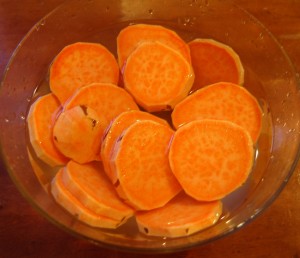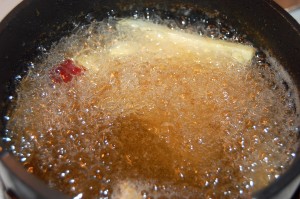I thought I’d pull up an interesting tale from the comments. It is a great illustration of what we’re trying to accomplish on this blog.
Thomas first commented here on December 31:
I just got your book from a relative for Christmas (I told them to buy me it!) and am reading through it now. Very interesting, although some of it is beyond a simple layman like me.
The part of this blog post that starts “Thus common symptoms of a bacterial infection of the brain are those of cognitive hypoglycemia and serotonin deficiency” and continues for several paragraphs describes precisely the mysterious changes I have experience over the last decade of life (I am now 33), with the one variation being that I suffer extreme fatigue rather than insomnia or restlessness. Every other sympton, including the odd mental state you mention, is a perfect match, and I experience them all to a marked degree….
I have been diagnosed with general anxiety but never depression. I do not feel sad ever, just irritable and anhedonia-ac, if I may coin a word. Anti-depressants, and I’ve tried a bunch, do absolutely nothing for me.
Brain infections are widespread – I wouldn’t be surprised if 20% of the adult population has a brain infection of mild severity – but they are hardly ever diagnosed or treated.
Fortunately, there are some symptoms that are almost universally generated by brain infections, so it’s not necessarily that difficult to diagnose them. But I think no one knows the symptoms. Infections are generally allowed to progress for decades.
One of my crucial steps forward was when I recognized that I had the cognitive symptoms of hypoglycemia when my blood sugar was normal. I could relieve the symptoms if my blood sugar became highly elevated. Thinking about why that might be led me toward the idea of bacterial infections.
Thomas went on to describe the origin of his symptoms:
I began to decline after suffering the second subdural hematoma of my life at age 20 when I was in Italy, followed by a 5 year binge on alcohol.
This was another clue. Traumatic brain injuries, such as hematomas, often initiate brain infections, because they breach the blood-brain barrier. Alcohol is also a risk factor, as I pointed out in my reply to Thomas:
Alcohol abuse depresses bacterial immunity and would be a risk factor for a brain infection: http://www.ncbi.nlm.nih.gov/pubmed/16413723, http://www.ncbi.nlm.nih.gov/pubmed/20161709. Subdural hematomas frequently show infections, e.g. http://www.ncbi.nlm.nih.gov/pubmed/20430901.
We next heard from Thomas on February 22, when he had been on our diet for 7 weeks and had just tried his first ketogenic fast:
I’ve been doing PHD for about 7 weeks now, and tried a ketogenic fast this past weekend. I ended up going 33 hours with some coconut oil and cream. It was a bit tough having to eat a bunch of oil on an empty stomach, but nothing too bad.
I can’t say there was any improvement cognitively or with anhedonia, but there seemed to me to be a pronounced calming effect after about 24 hours of fasting. I often stutter or stumble over words (again, for about 10 years now), which usually goes away only with two or three alcoholic drinks. But the speech problems stopped almost completely during the fast, which makes me thing that there is some link to anxiety and stuttering.
Positive changes in brain function during ketosis suggest that the brain isn’t functioning normally when it relies on glucose as a fuel. There are several possible causes of this, but one is a bacterial infection. Another clue.
I generally recommend getting on our diet and supplement regimen, and reaching a stable health condition, before starting antibiotics. There are several reasons for this, which I’ll elaborate on later, but briefly:
- Antibiotics work well on a good diet but may fail on a bad diet.
- Pathogen die-off toxins can cause significant neurological damage and this toxicity may be substantially increased on a bad diet.
- There is considerable diagnostic value in being able to clearly discern the reaction to antibiotics. Rarely is it certain that a brain infection is bacterial, or that the antibiotic in question is the correct one. To judge whether the antibiotic is working, it’s important that health be stable and as good as possible.
I therefore recommend being on our diet and supplement regimen for 3-4 months before starting antibiotics.
Thomas seems to have followed this advice, since he has just reported starting antibiotics:
I’ve been on PHD for a few months, and about a month ago went to the low-carb therapeutic ketogenic version of the PHD. After reading some of Paul’s posts, I believe that I might have a brain infection as a result of a head injury from more than a decade ago (Paul, if you recall, my condition has a lot of similarities to the one you once had). I started taking doxycycline a few days ago, and I have already noticed pronounced improvement (whether due to the diet or the antibiotic or both) in controlling the irritability and anxiety that have plagued me for years….
I definitely feel great since making the diet changes. My blood pressure, which has been creeping upwards over the last few years to 135/80 or so, is back down to 110/70. My testosterone is 824, and I am pleased to see that I maintaining my strength in the gym despite being on a ketogenic diet.
Pronounced improvement in the first days of doxycycline is quite possible, because doxy acts as a protein synthesis inhibitor. It essentially blocks bacterial functions and switches them into a state of hibernation. The bacteria are still there, but they are not interfering with brain function as much as before.
This improvement is confirmation that Thomas has a bacterial infection of the brain. If there were no infection, he wouldn’t notice an effect from the antibiotics.
Over a period of months, the doxycycline plus ketogenic dieting should help his innate immune defenses clear the brain of most bacteria. Combination antibiotic protocols may be even more effective.
In a follow-up comment, Thomas mentioned Ben Franklin and the blessing of good health:
Thanks for the response Paul, as well as all your help. If this works, I owe you my first-born child and then some! Ben Franklin (I think it was him) might have been right about health being the greatest blessing. The improvements I’ve seen recently have done more for my well-being than anything in the last decade, and I am profoundly grateful to you for all your excellent advice.
It’s comments like this that make blogging and book writing worthwhile.
It’s probably hard for those who have never had ill health to appreciate how enjoyable it can be for those with chronic diseases to recover good health. I’ve blogged on this before (Of Recovery, Hope, and Happiness, July 13, 2010 – don’t miss Ladybug’s painting).
Thomas, antibiotics and ketogenic dieting will work, I’m pretty sure. May you come to perfect health, and always remain grateful for the many blessings that are yours.






















Recent Comments